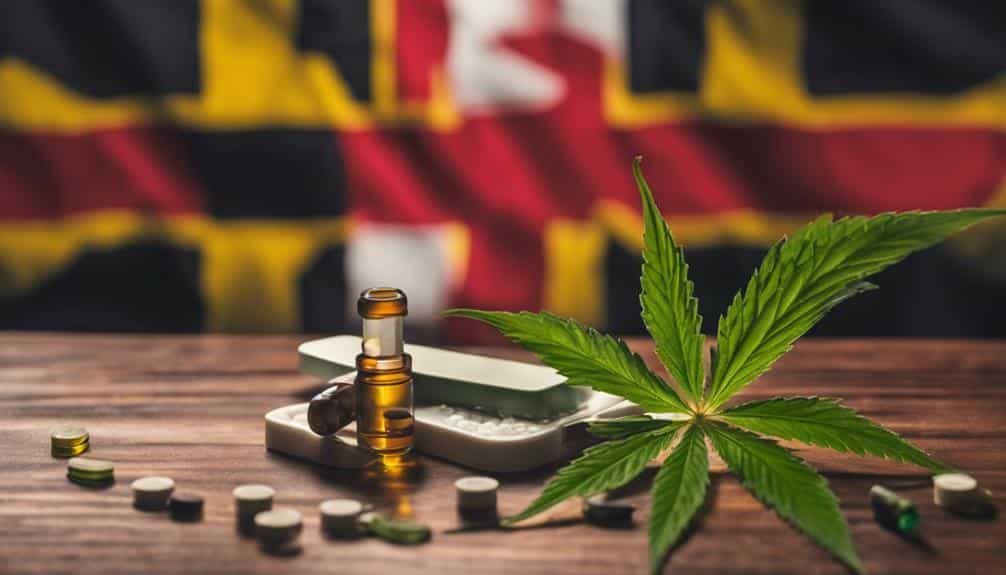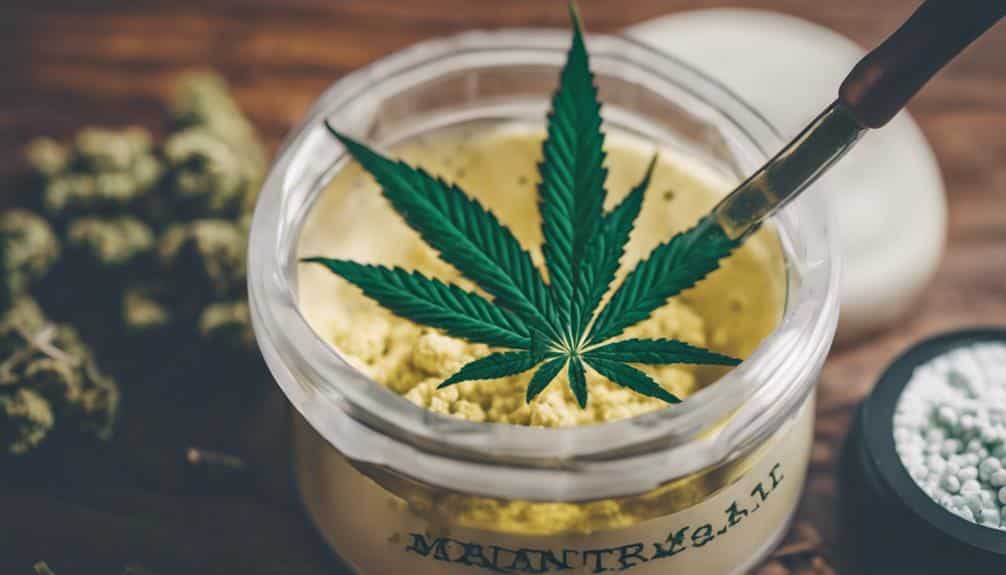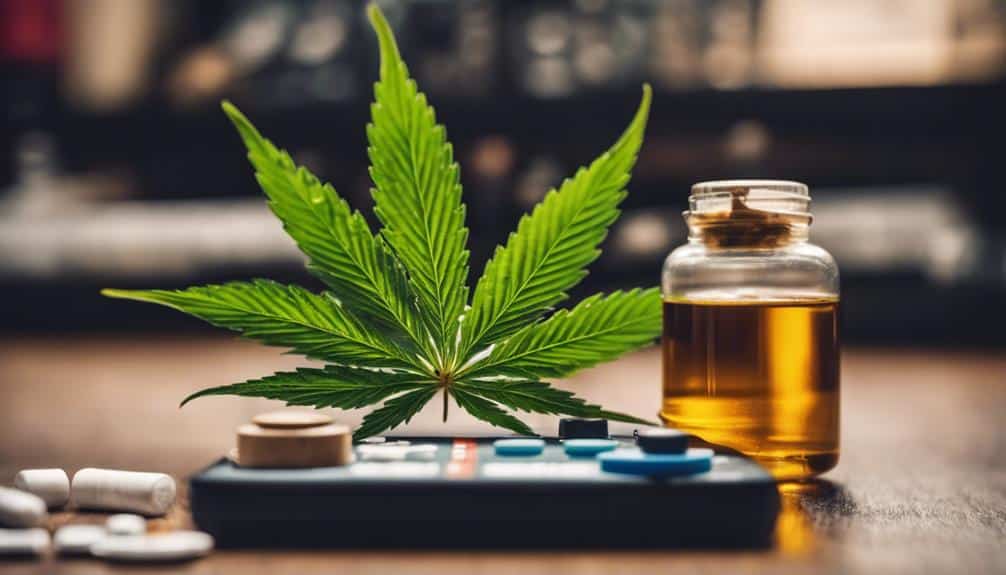You’ve likely heard about Maryland’s move towards integrating medical marijuana with traditional medications. But what does this mean for you? It presents an opportunity for a breakthrough in symptom management and quality of life improvement. However, it’s not without its complications. Finding the right balance in dosage and understanding potential risks requires careful supervision. You’ll want to know more about how healthcare providers in Maryland are navigating this uncharted territory.
Understanding Medical Marijuana

To fully grasp the implications of combining medications and medical marijuana, it’s crucial that you first understand what medical marijuana is and how it works within the body. Medical marijuana, also known as medical cannabis, refers to the use of the Cannabis plant or its basic extracts for treating various ailments or conditions.
The core of its therapeutic applications lies in its rich cannabinoid chemistry. Cannabinoids, in particular, are compounds that interact directly with the body’s endocannabinoid system (ECS), a complex cell-signaling system that plays a crucial role in regulating a wide range of functions and processes including sleep, mood, appetite, memory, and even reproduction and fertility.
The two most well-understood cannabinoids are THC (delta-9-tetrahydrocannabinol) and CBD (cannabidiol). THC is psychoactive; meaning it’s the part of marijuana that produces the ‘high.’ CBD on the other hand is non-psychoactive and has been linked to a host of health benefits, from reducing seizures and inflammation to alleviating anxiety and pain.
Understanding this chemical interplay is key to understanding the potential benefits and risks of combining medical marijuana with other medications. Always remember, though, that the safest approach is to consult with a healthcare provider before starting any new treatment regimen.
Traditional Medications: A Brief Overview
While understanding medical marijuana’s interaction with the body is important, it’s equally vital to grasp the fundamentals of traditional medications, their functions, and their potential side effects. This knowledge forms a cornerstone of Medication Evolution and Pharmaceutical Traditions that form the backbone of modern healthcare.
Traditional medications are products of centuries of medical research, trial and error, and scientific breakthroughs. They’re designed to treat a wide range of conditions; from common ailments like headaches and stomachaches to life-threatening diseases like cancer and heart disease. Each medication is typically targeted to alleviate specific symptoms or halt the progression of certain diseases.
However, they’re not without their drawbacks. Potential side effects can range from mild annoyances to serious health risks. It’s important to understand these risks before starting any medication regimen. Furthermore, the effectiveness of these medications can vary greatly from person to person depending on factors such as genetics, lifestyle, and overall health.
Medical Marijuana in Maryland: Legal Status

Navigating the legal landscape of medical marijuana in Maryland, it’s crucial to note that it’s been legally recognized since 2014, opening new pathways for patients seeking alternative treatments.
However, despite this progressive step, you’ll encounter legal obstacles that may hinder patient accessibility. The law stipulates that patients must register with the Maryland Medical Cannabis Commission (MMCC) and obtain a written certification from a medical provider registered with MMCC.
Moreover, it’s important to remember that not all conditions qualify for medical marijuana treatment. The state has a specific list; the patient’s condition must be severe and have not responded to traditional treatments.
Additionally, there’s an inherent legal conflict between state and federal law as the latter still classifies marijuana as a Schedule I substance. This discrepancy creates a precarious situation for patients and providers alike as they operate under the risk of federal prosecution.
Lastly, the cost of medical marijuana isn’t covered by health insurance which may limit accessibility for some patients.
Potential Benefits of Combining Treatments
Despite the aforementioned legal hurdles, combining traditional medications with medical marijuana may yield significant health benefits for patients suffering from severe resistant conditions. The phenomenon of ‘Cannabis Synergy,’ where the complex mixture of compounds in marijuana work together to produce a greater effect than any single compound alone can potentially enhance the efficacy of traditional treatments.
Scientific research has showcased several therapeutic potentials. For instance, a study on chronic pain patients showed those who used cannabis had 64% lower opioid use demonstrating how this synergy can reduce reliance on potentially harmful narcotics. Furthermore, medical marijuana has shown effectiveness in alleviating symptoms of chemotherapy like nausea and vomiting which aren’t always controlled by standard drugs.
Cannabis can also potentially improve quality of life. Patients with chronic illnesses often suffer from anxiety and depression; studies suggest that cannabis use can offer relief from these symptoms.
However, it’s crucial to remember that these benefits hinge on careful supervised use. As a healthcare professional, it’s your role to guide patients through this process ensuring they understand how to use cannabis safely in conjunction with their existing treatments. Remember, serving others involves not just treating symptoms but fostering overall wellbeing.
Risks and Precautions in Treatment Combination

While acknowledging the potential benefits of combining medical marijuana with traditional treatments, it’s equally important to consider the risks and necessary precautions involved in such a therapeutic approach.
Dosage optimization is crucial as every individual’s response to treatment is unique. Overdosing on marijuana can lead to undesirable side effects such as dizziness, anxiety, and paranoia. Evidence from clinical studies suggests that patients who consume medical marijuana and traditional medications concurrently may require adjustments in dosages to achieve the desired therapeutic effect. Hence, it’s essential for a healthcare provider to monitor and adjust dosages as necessary.
Side effect management is another critical aspect of this treatment approach. Certain traditional medications when combined with marijuana might exacerbate side effects or create new ones. For instance, combining marijuana and opioids can increase the risk of drowsiness and confusion.
Maryland’s Policies on Treatment Integration
In Maryland, you’ll find that state policies actively support the integration of medical marijuana with traditional treatments albeit with specific guidelines and regulations in place to ensure safe and effective use. The policy evolution in Maryland has been progressive gradually recognizing the therapeutic potential of medical marijuana while prioritizing patient safety.
Maryland’s policies are designed to ensure treatment accessibility. The state has made provisions for a wide demographic of patients acknowledging that medical marijuana could be a valuable addition to several treatment plans. However, it’s not a free-for-all. You’ll need to be certified by a registered provider adhering to the state’s guidelines to legally access medical marijuana.
Maryland’s policies also stipulate the specific conditions for which medical marijuana can be prescribed ensuring that its use is evidence-based and medically justified. These conditions range from chronic pain to severe nausea further attesting to the versatility of medical marijuana as a treatment supplement.
In essence, Maryland’s policies strike a balance between promoting treatment integration and maintaining patient safety. They reflect an understanding of the complexities of combining medical marijuana with traditional treatments and the need to regulate this practice responsibly.
Patient Experiences and Case Studies

Drawing from real-life scenarios we can further examine how Maryland’s policies have directly impacted patients who’ve integrated medical marijuana with their traditional treatments. An evidence-based approach reveals key insights into patient experiences and the role of patient advocacy.
One case study focuses on a middle-aged woman suffering from chronic pain. Traditional medications provided limited relief and were accompanied by side effects. After integrating medical marijuana, she reported significant reduction in pain and improved quality of life. This case exemplifies Maryland’s commitment to treatment accessibility allowing patients to explore alternative options.
However, not all experiences have been positive. Some patients have faced hurdles with insurance coverage given medical marijuana’s federal status. Patient advocacy groups are vital in these instances offering support and guidance in navigating the system.
These cases underscore the importance of ongoing policy review and revision ensuring the system adequately supports patients’ needs. They also highlight the crucial role of patient advocacy in promoting accessibility improving patient experience and informing policy changes. Patient voices amplified by advocacy are instrumental in shaping a more responsive and inclusive healthcare landscape.
Conclusion
Combining traditional medications and medical marijuana in Maryland isn’t a straightforward process. It requires a well-informed approach taking into account both potential benefits and risks. Your healthcare provider aims to ensure you get the best of both worlds minimizing potential harm. Remember, this isn’t a one-size-fits-all solution; what works for one may not work for another. It’s all about finding the right balance and getting the most out of your treatment plan in Maryland.
I encourage you to visit us at Fells Point Cannabis Docs of Maryland. Our team is here to provide you with the knowledge and support you need on your journey towards integrated health solutions. And remember if you have any questions or if you’d simply like to chat about your options don’t hesitate to give us a call. We’re always here to help, we’d be delighted to hear from you.

